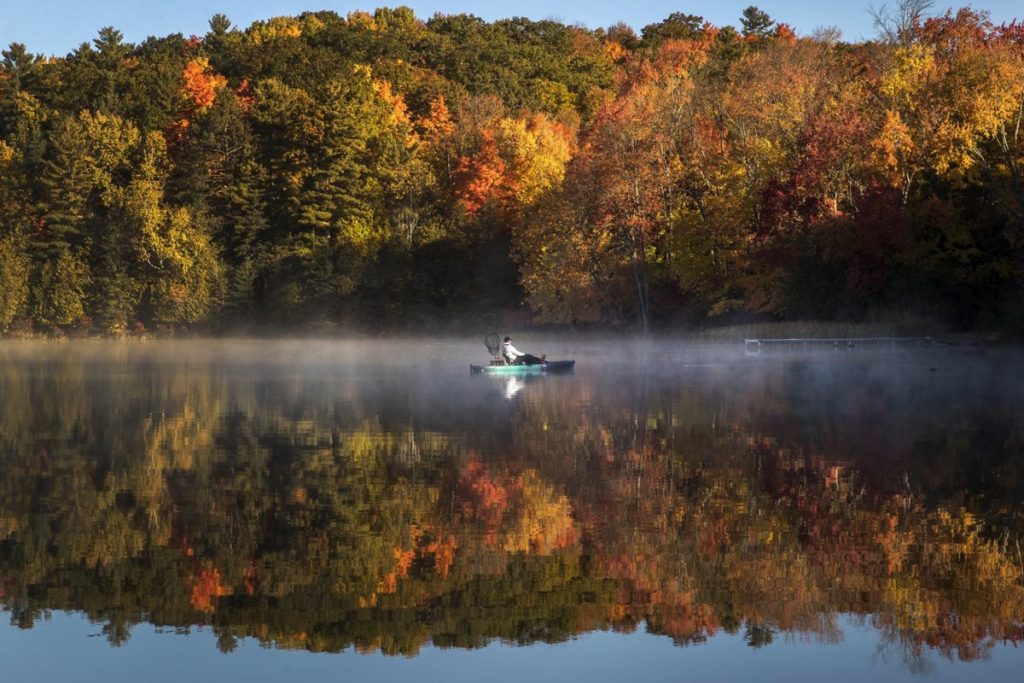TORONTO — An particularly heat fall in Ontario means the province might not get the colorful array of fall foliage that normally transforms treetops this time of yr.
TORONTO — An particularly heat fall in Ontario means the province might not get the colorful array of fall foliage that normally transforms treetops this time of yr.
Some elements of Ontario, notably the Larger Toronto Space, skilled larger than regular temperatures in September, and that climate sample results in duller colors, specialists say.
“The weather that really promotes bright fall colours — strong fall colours — is a combination of sunny and cold, and we have been more sunny and warm,” mentioned Susan Dudley, a professor of biology at Hamilton’s McMaster College.
Whereas temperatures have dropped lately, she mentioned it may be too late for the physiological course of that triggers bushes to alter their colors.
“The weather has been strange, (it) has been very warm up till recently.”
Daylength, tree species and climate situations are three key elements that decide the color of autumn leaves, in keeping with specialists.
Japanese elements of North America basically, and Ontario particularly, usually have the proper mixture of those three elements, leading to vibrant yellow, orange and purple foliage, Dudley mentioned.
Ontario’s fall can be beautiful as a result of the province has an extended and colder fall season with sufficient daylight, and is house to completely different sorts of woody crops, together with maple bushes that normally produce stunning golden and purple pigments.
Since climate is the one element that varies from yr to yr, it has a better influence on the type of foliage folks can anticipate, Dudley continued.
Consultants say three chemical compounds play a significant position within the manufacturing of pigments in a leaf.
Chlorophyll is answerable for inexperienced color in the course of the rising season, and carotenoids give them a yellow hue that turns into extra seen after chlorophyll breaks down.
The third chemical is anthocyanins, which is particularly fashioned when sugar focus will increase within the leaf. It is answerable for the purple, orange and golden pigments.
Sean Thomas, a professor of forest ecology on the College of Toronto, mentioned near freezing temperatures — however not frost — mixed with vivid daylight is important to brighter foliage.
“We’ve had pretty summery temperatures until the last week or so and still nothing close to that, say, one-to-two degrees Celsius overnight temperatures” that’s wanted, he mentioned.
Fall colors are extra vibrant in areas north of the Larger Toronto Space the place the climate has been colder, Thomas famous.
Local weather change has introduced with it a gentle rise in temperatures, hotter fall seasons and extra precipitation and cloud cowl, specialists say.
That implies duller and fewer vibrant falls may grow to be extra frequent in the long term, they warn.
“This year really captured those (changes), especially the higher precipitation inputs and that in general is not a good long-term forecast for vibrant fall colours,” Thomas mentioned.
Ontarians nonetheless have an opportunity to see some tree colors earlier than the province is blanketed with snow but it surely will not final so long as earlier years.
Thomas mentioned that whereas climate situations weren’t beneficial in September, chilly snaps previously week might deliver stunning foliage earlier than the autumn ends.
“We will see something, but, likely not, you know, quite what we saw last year,” he mentioned.
“We’re still in the window where if we get those cold (snaps) some trees will give us a show.”
This report by The Canadian Press was first printed Oct. 14, 2024.
Sharif Hassan, The Canadian Press









